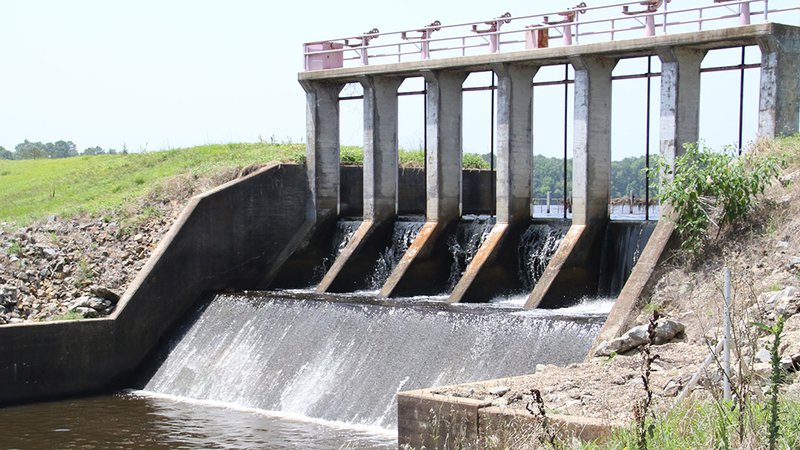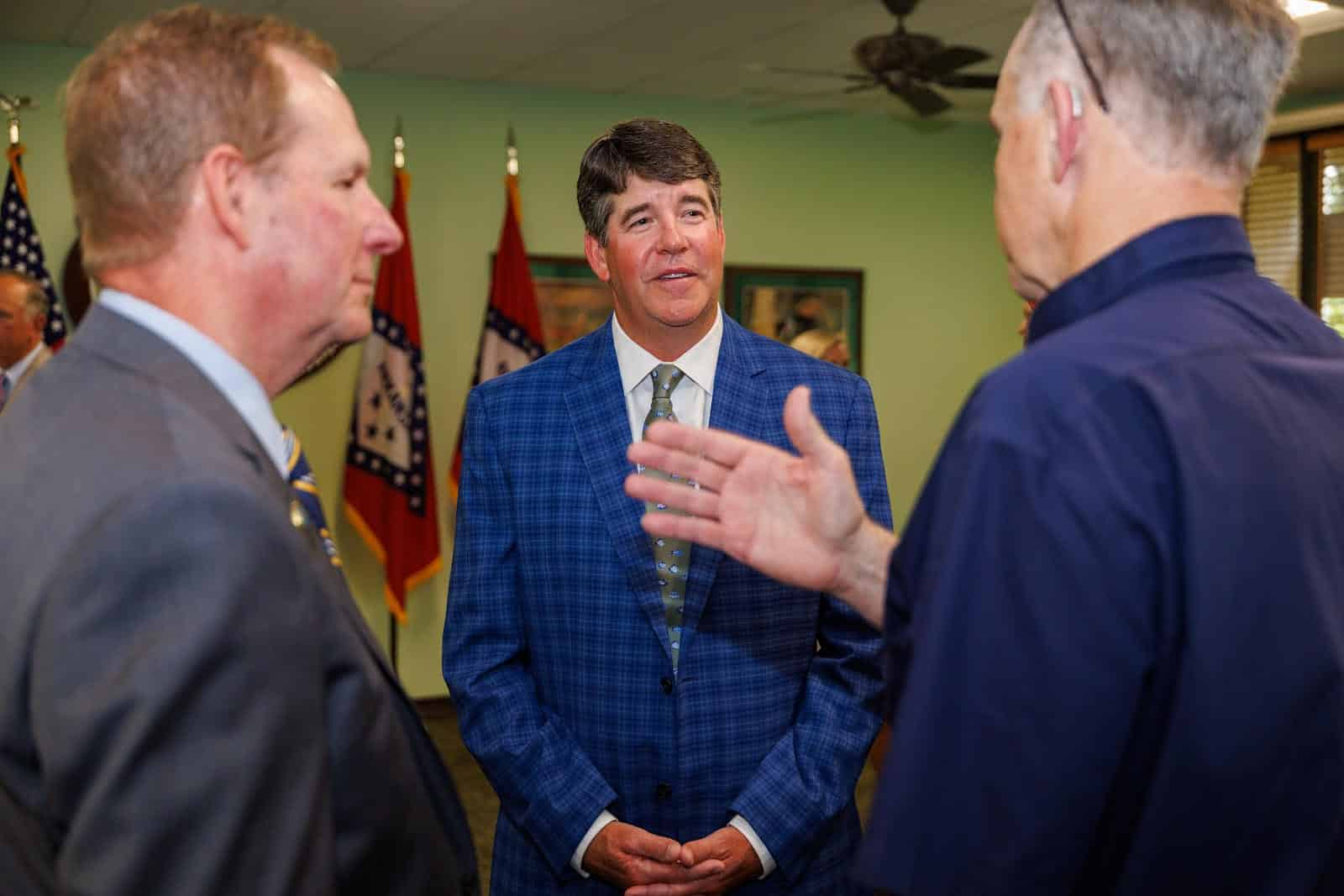Slow leak causes troubles at Tri-County Lake
ON 03-31-2021

March 31, 2021
Randy Zellers
Assistant Chief of Communications
FORDYCE — Managing fisheries is a fight against Father Time, and it’s a battle the Arkansas Game and Fish Commission has been fighting for decades. Mike Knoedl Tri-County Lake in Calhoun County is one of many lakes throughout the state that’s showing its age.
Staff in south Arkansas have worked for the last few years to provide a fix for a slow leak that developed on the spillway gates. The lake still holds water during the rainy part of the year, but will begin to affect angling opportunities during summer, when evaporation and dry spells combine to drop the lake level by as much as 2 feet.
Jason Olive, assistant chief of fisheries for the AGFC, says 2 feet may not seem like much on some lakes in Arkansas, but at Tri-County it can really impact the amount of fishing access available for anglers.
“For the last couple of summers, we’ve been lucky and had a little more rain than usual, so the leak didn’t really hurt angling, but during our last dry summer, we had a lot of phone calls from anglers who were upset about not being able to get to the water from the bank without crossing a mudflat,” Olive said.
Olive says the lake’s shallow nature has been an issue with anglers in the past, as the most popular fishing locations are a series of fishing jetties on the lake’s north bank. Most of these jetties are surrounded by water only 2 feet deep or shallower, so a summertime drop would remove these options for shorebound anglers, who make up a large percentage of the lake’s anglers.
Constructed in 1950, Mike Knoedl Tri-County Lake was the first lake built by the AGFC in south Arkansas. After 71 years, any mechanical system is going to need repair, no matter how well it has been maintained. In the case of Tri-County the gates that hold the water back have already been replaced before but have again reached the end of their lifespan.
“Any metal structure is going to deteriorate over time in the water,” Olive said. “The water in south Arkansas also leans toward the acidic side, so it eats away at metal faster. The gates on Tri-County were rehabilitated in the 1980s and again in the late 1990s, and they’re due for replacement again.”
So far, fisheries staff have been able to keep the water loss to a minimum using cypress mulch to temporarily block the small gaps. The mulch is poured into the water next to the water-control tower and suction from the leak pulls it into the small gaps in the gate seal to block up the hole. The fix is only temporary, as the mulch will deteriorate or become dislodged, requiring additional material to be added.
“We still see some water loss, but it’s bought us some time during dry summers,” Olive said.
The cost to repair the gate is estimated at roughly $90,000 but could be higher once engineers get a closer look.
Chris Colclasure, assistant director of the AGFC, says the story at Tri-County is similar to many others across the state. The majority of the lakes, hatcheries and other infrastructure controlled by the agency were built many decades ago and are well past their intended lifespan.
“Even with the best maintenance, these structures eventually need to be replaced, and we’ve had to make some tough decisions in the last few years to defer maintenance at one location to be able to address another issue somewhere else in the state,” Colclasure said. “We’re also embarking on a huge renovation to our greentree reservoirs to continue providing waterfowl habitat for future generations, and that entails work on 16 wildlife management areas covering 50,000 acres of flooded bottomland hardwoods that will continue to die off if we don’t do something. We’re facing challenges now like we’ve never seen, and the example at Tri-County is one of many projects waiting in line for funding approval.”
In the meantime, Olive says work for anglers in south Arkansas continues. Olive says a Marine Fuel Tax project was approved in 2020 to improve boating access to the lake. Funds from Arkansas’s Marine Fuel Tax are earmarked for boating access and cannot be used to address the leaking gate, but Calhoun County was authorized to use MFT funds to pave the road and parking areas leading to two of the lake’s boat ramps.
“The AGFC approved the project in 2020, and Calhoun County is in charge of the construction, which we hope will begin soon,” Olive said.
Recent News

Arkansas Wildlife Weekly Fishing Report
Jul. 10, 2025

Lonoke aquaculturist named to AGFC
Jul. 10, 2025
Subscribe to Our Weekly Newsletter E-mails
Don’t miss another issue. Sign up now to receive the AGFC Wildlife Weekly Newsletter in your mailbox every Wednesday afternoon (Waterfowl Reports are published weekly during waterfowl season and periodically outside the season). Fishing Reports arrive on Thursdays. Fill in the following fields and hit submit. Thanks, and welcome!
